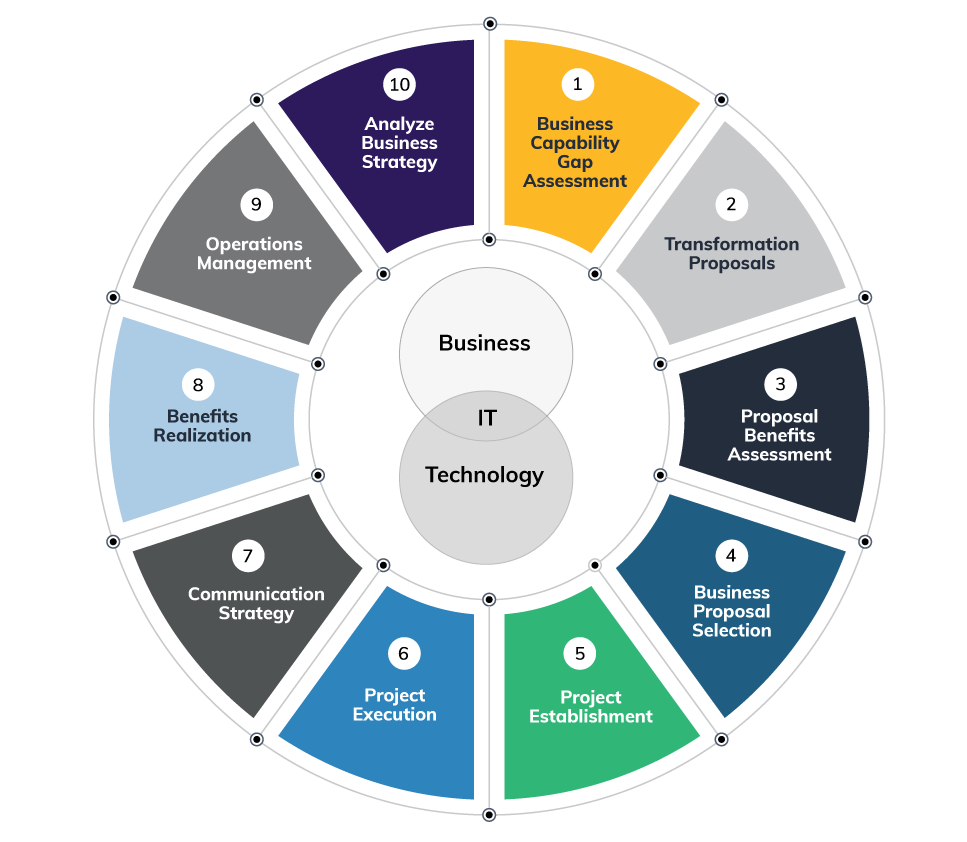Developing an IT Strategy that Aligns with Business Objectives
 In today’s fast-paced business environment, technology is an essential driver of success. For startups and small-to-medium enterprises (SMEs), aligning IT strategy with business objectives can be a game-changer. However, many organizations struggle with this alignment, leading to wasted resources, missed opportunities, and diminished competitiveness.
In today’s fast-paced business environment, technology is an essential driver of success. For startups and small-to-medium enterprises (SMEs), aligning IT strategy with business objectives can be a game-changer. However, many organizations struggle with this alignment, leading to wasted resources, missed opportunities, and diminished competitiveness.
In this blog, we’ll explore the importance of developing an IT strategy that aligns with business goals, identify common pain points faced by startups and SMEs, and demonstrate how APKA Industries can help overcome these challenges.
Why IT Strategy Alignment Matters
1. Streamlined Operations: An aligned IT strategy allows organizations to streamline operations, ensuring that technology initiatives directly support business processes. This leads to greater efficiency and productivity.
2. Informed Decision-Making: When IT is aligned with business objectives, data and analytics can be leveraged effectively to make informed decisions. Access to relevant data allows businesses to respond quickly to market changes.
3. Enhanced Customer Experience: Technology plays a vital role in shaping customer interactions. An aligned IT strategy enables businesses to improve their customer experience, leading to higher satisfaction and loyalty.
4. Adaptability: Businesses must be agile to adapt to changing market conditions. A well-aligned IT strategy allows for flexibility in resource allocation and prioritization of projects based on shifting business needs.
5. Competitive Advantage: Companies that effectively align their IT and business strategies are better positioned to capitalize on new opportunities, outperform competitors, and achieve sustainable growth.
Common Pain Areas for Startups and SMEs
While the benefits of a well-aligned IT strategy are clear, many startups and SMEs face several challenges in achieving this alignment:
1. Limited Resources: Many startups and SMEs operate on tight budgets and have limited IT staff, making it difficult to develop and maintain a comprehensive IT strategy.
2. Lack of Understanding: Often, business leaders may not fully understand how technology can support their goals, leading to ineffective IT investments.
3. Inconsistent Goals: In some organizations, different departments may have conflicting objectives, making it challenging to create a cohesive IT strategy that serves the entire business.
4. Fragmented Technology Landscape: As businesses grow, they may adopt various technologies that don’t integrate well, resulting in a disjointed approach to IT.
5. Resistance to Change: Implementing a new IT strategy may encounter resistance from employees who are accustomed to existing processes, making adoption difficult.
Steps to Develop an Aligned IT Strategy
To overcome these challenges and develop an IT strategy that supports business objectives, organizations can take several key steps:
1. Define Business Objectives: Start by clearly articulating the business goals. Whether it’s improving customer service, increasing revenue, or expanding into new markets, understanding these objectives is crucial.
2. Engage Stakeholders: Involve key stakeholders from various departments in the strategy development process. This collaboration ensures that the IT strategy addresses the needs and goals of the entire organization.
3. Assess Current Technology: Conduct a thorough assessment of the existing technology landscape. Identify tools and processes that are working well and those that need improvement or replacement.
4. Identify Gaps and Opportunities: Compare the current technology capabilities against the defined business objectives. Identify any gaps that need to be addressed and opportunities for leveraging technology to achieve goals.
5. Create a Roadmap: Develop a clear IT strategy roadmap that outlines the initiatives and projects needed to align technology with business objectives. Include timelines, resource requirements, and key performance indicators (KPIs) to measure success.
6. Implement and Monitor: Once the strategy is in place, implement the initiatives outlined in the roadmap. Regularly monitor progress and make adjustments as necessary to stay aligned with business objectives.
7. Foster a Culture of Adaptability: Encourage a culture that embraces change and values innovation. Provide training and support to employees to facilitate the adoption of new technologies and processes.
How APKA Industries Can Help
At APKA Industries, we understand the complexities involved in developing an IT strategy that aligns with business objectives. Our consulting services are designed to assist startups and SMEs in overcoming common pain points while leveraging technology for growth. Here’s how we can support your organization:
– Expert Consultation: Our experienced consultants work closely with you to define clear business objectives and align IT initiatives accordingly.
– Technology Assessment: We conduct a comprehensive assessment of your current technology landscape, identifying gaps and opportunities for improvement.
– Collaborative Approach: We facilitate collaboration among stakeholders to ensure the IT strategy addresses the needs of all departments.
– Customized Roadmap: We help you create a detailed IT strategy roadmap that prioritizes initiatives based on available resources and expected returns.
– Ongoing Support: We provide continuous support throughout the implementation process, monitoring progress and making adjustments to keep your strategy aligned with business goals.
Conclusion
In an increasingly digital world, aligning IT strategy with business objectives is essential for success. Startups and SMEs must overcome common challenges such as limited resources, lack of understanding, and resistance to change to leverage technology effectively. By following strategic steps and partnering with APKA Industries, businesses can develop an IT strategy that drives efficiency, innovation, and long-term growth.

